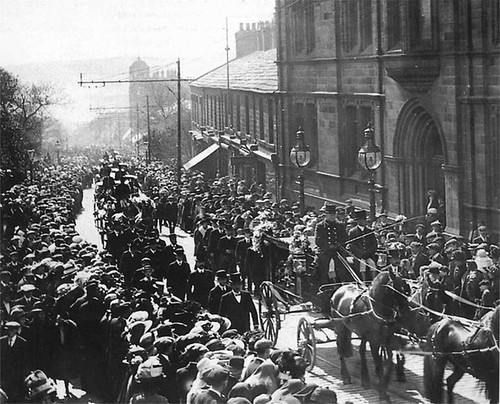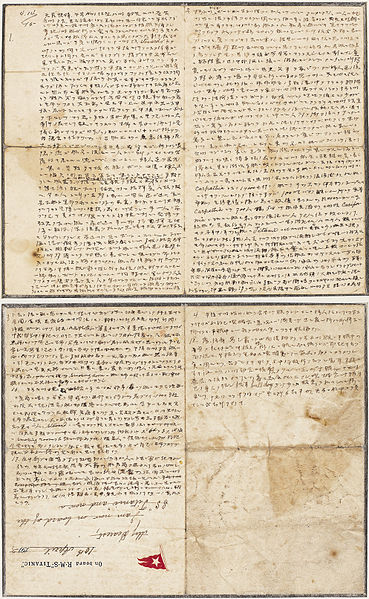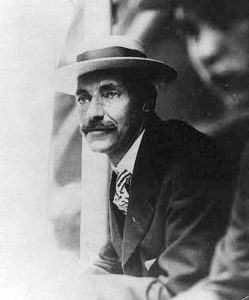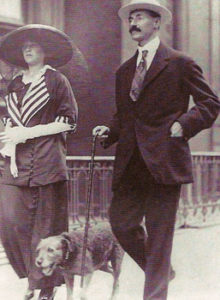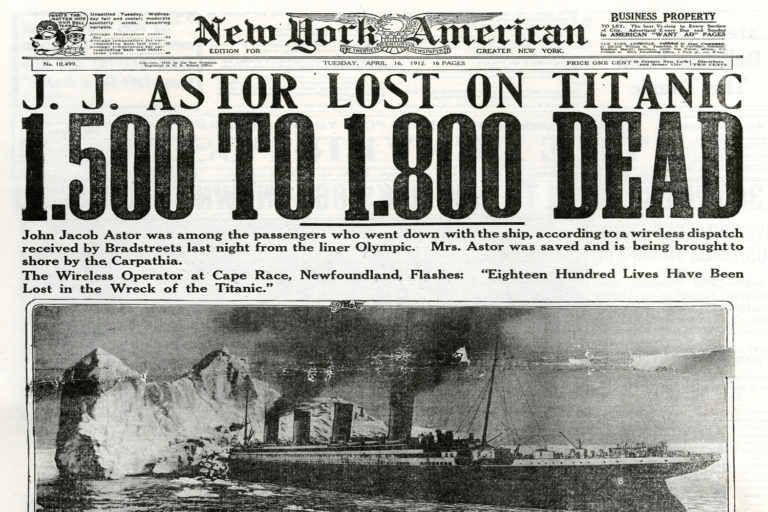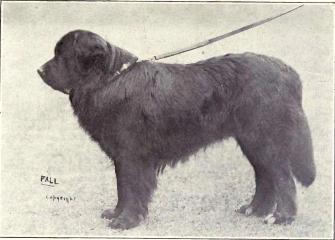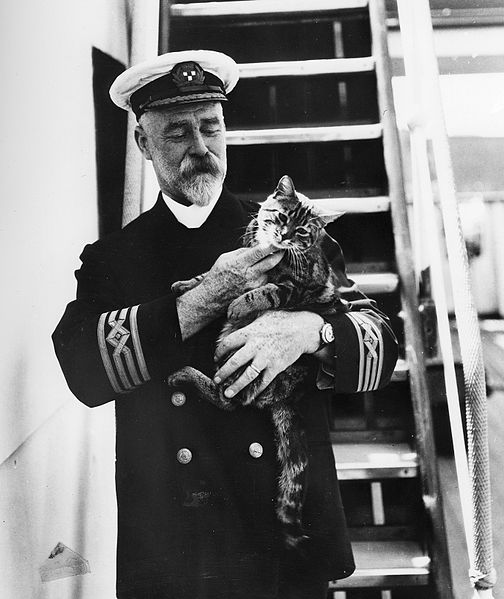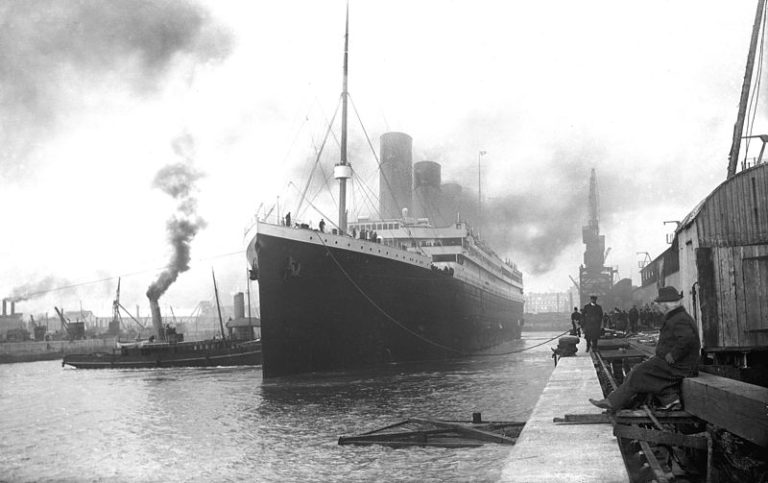"We Thought He Would Fiddle Himself Into Fame": Violinist John Law Hume
John Law Hume, who went by "Jock," was one of Titanic's violinists, and was from Dumfries, Scotland. He'd been playing on board ships since he was only 15, and saw Titanic as an opportunity to exercise his talents for a future in concert-playing.
Jock's stepmother apparently asked him not to travel on Titanic, having had nightmares that tragedy would befall him. He ignored her, because he needed extra money; he was getting married to his sweetheart Mary Costin in just a few weeks.

Titanic's orchestra. Jock Hume is pictured in the lower left corner.
Jock was by all accounts a merry and charming man. He was described by a former band-mate, Louis Cross, as "the life of every ship he ever played on and beloved of every one from cabin boys to captains."
He'd been a bright student with innate aptitude for the violin--a fact he was no doubt delighted by, given that his father liked to spin family mythologies about forebears being great Scottish composers and instrumentalists. Louis Cross also recalled that Jock boasted that his family had been full of "minstrels" in days long past.
He studied a great deal, although he could pick up without trouble difficult compositions that would have taken others long to learn.
© As cited in "The Band That Played On" by Steve Turner. 2011.
An unnamed childhood friend described Jock as "a happy-faced lad" and spoke to the great esteem felt for him and his musical talents.
No one was a greater favourite at school... In the old days we have heard him, in the old Shakespeare Street Theatre, playing till the curtain should rise on many a mimic tragedy. We thought he would fiddle himself into fame.
© As cited in "The Band That Played On" by Steve Turner. 2011.
Jock appears to have preferred moving about between tables when playing a saloon, and loved to engage with people--even having a bit of fun with uppity passengers.
For instance, according to Louis Cross, a lady was vexing Jock by being a right know-it-all. After giving Jock a very tiresome time, she requested a particularly intricate piece of classical music. Jock smiled, whispered to his band-mates and then they played--so beautifully, that the woman made the effort to thank them afterwards for accomplishing such a fabulously difficult classical number.
Except that it was actually ragtime, played super-slow.
Jock reported to Titanic with two violins in hand, as he was testing them to see which suited him best.
He was assigned to the five-man band led by Wallace Hartley, and which played during various occasions throughout the ship.
The Notoriously Unlucky Lucky Stewardess Violet Jessop wrote in her memoirs of Jock's exuberant performance on the evening of April 14, 1912. The two had known each other from their time on Titanic's elder sister, Olympic.
"On that Sunday evening, the music was at its gayest, led by young Jock the first violin... he laughingly called out to me in his rich Scotch accent, that he was about to give them a 'real tune, a Scotch tune, to finish up with.'"
From the memoirs of Stewardess Violet Jessop. © As cited in "The Band That Played On" by Steve Turner. 2011.
This was characteristically Jock, as far as any testimony can support. It was well-known that he loved to imbue otherwise staid pieces with some Scottish flair, and loved to play jigs.
Accounts such as Violet's have led to some speculation that Jock, not Wallace, was Titanic's bandleader, but this is misleading. Violet's memory, as well as others, was of a quartet. It's likely, though unable to be confirmed, that Jock casually joined up with the restaurant trio during his downtime from the five-piece band led by Wallace Hartley.
After the collision with the iceberg, Violet somehow bumped into Jock as he ran up the stairs.
I ran into Jock, the bandleader and his crowd with their instruments. 'Funny, they must be going to play,' though I, and at this late hour! Jock smiled in passing, looking rather pale for him, remarking, 'Just going to give them a tune to cheer things up a bit,' and passed on.
From the memoirs of Stewardess Violet Jessop. © As cited in "The Band That Played On" by Steve Turner. 2011.
Jock Hume was 21 years old when he died alongside his seven band-mates in the sinking of Titanic.
His corpse was one of only three orchestra members to be recovered by the Mackay-Bennett, on a day full of rain and fog.
Jock had had nothing personal on him, such as items bearing his initials, that would have indicated his identity. So a photo was taken of him in his coffin and was sent out to the White Star offices for identification.
Age, about 28 Hair, Light curly; clean shaven - Marks, None
CLOTHING - Light rain coat; uniform jacket with green facing and vest; purple muffler.
EFFECTS - Cigarette case; silver watch; empty purse; knife with carved pearl handle; mute; brass button with "African Royal Mail"; English lever watch.
Mere weeks after the sinking, Jock's father Andrew Hume received a bill from C.W. & F.N. Black, the Liverpool firm that employed musicians for shipwork, demanding compensation for Jock's uniform. Jock had, it turned out, had it cleaned and altered shortly before Titanic's departure.
[April 30, 1912]
Dear Sir,
We shall be obliged if you will remit to us the sum of 5s-4d, which is owing to us as per enclosed statement. We shall also be obliged if you will settle the enclosed uniform account.
Yours faithfully,
C.W. and F.N. Black
Andrew was so livid about the request that he forwarded it to the Amalgamated Musicians' Union. They published it with a single line of commentary from the editor: "Comment would be superfluous!"
But there was more outrage on Andrew Hume's horizon.
As it turned out, Jock had died never knowing that his fiancee, Mary Costin, was pregnant. Jock's family refused to accept the baby for years thereafter, even fighting Mary's claim in court during her pregnancy. They lost.
In turn, Mary, evidently wanting to make her daughter's paternity perfectly clear, named her daughter Johnann Law Hume.
Then, in 2015, Jock Hume re-entered the news when his grandson, Christopher Ward, discovered that Jock had another secret: that while in the Caribbean, young Jock had fathered a son with a Jamaican barmaid named Ethel. She had given birth in 1911.
Ward learned of it because in researching his genealogy, he was given a document that listed Mary and Ethel, across the world from one another, having both filed for compensation for their fatherless babies.
SOURCE MATERIAL
Turner, Steve. "The Band That Played On." Thomas Nelson Publishing, 2011.


